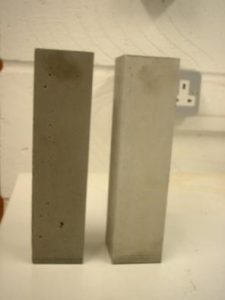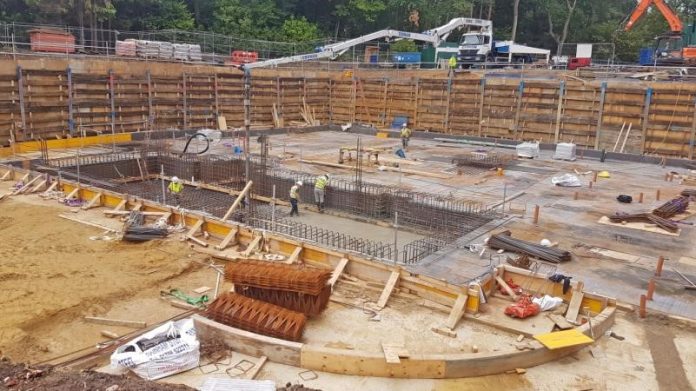James McDonald of Cementaid discusses the testing process for water-resisting admixtures
As was discussed in the first article in the January 2018 issue of PBC Today, the mechanism by which water passes through properly compacted concrete without defects is capillary absorption. What is often not appreciated is that it is the speed of water transpiration through the concrete that matters and trying to solve this by making the concrete denser actually has the opposite effect.
Why? By making the concrete denser, you increase capillary pressure, so although the concrete will hold less water (and give better results in such tests), the speed of water passage through the concrete will be greater and this water may contain one of a number of dissolved substances that are harmful to reinforcement or the concrete itself. For example, chlorides, sulfates, acids or even simple things like lactic acid in milk, which causes immeasurable damage to unprotected concrete in dairy and milk processing plants. So how does the European standard for water-resisting admixtures, EN934:2, help in selecting products suitable to enhance the resistance of concrete to attack?
The standard has just one absorption test. The problem is that this test measures how much water the concrete will absorb and not how quickly it will pass into and through the concrete.
Now the density of the concrete is largely determined by the volume of excess water over and above that needed to hydrate the cement. This extra water is needed to make the concrete workable enough for transporting, placing and compacting. This excess water evaporates from the concrete leaving behind a network of pores and capillaries.
By using a superplasticising admixture, you can reduce this extra water requirement and still have highly workable and placeable concrete. By doing this you will make the concrete denser. As a result, passing this absorption test only requires the use of a high-range water-reducing superplasticiser.
However, this is the test laid down to qualify as a water-resisting admixture and it does give an indication of water resistance but the pass level is very easily achieved. A rough analogy might be asking what a sports car is. Is a two-seater open top car with a top speed of 80mph a sports car? If it is, my Fiat 500 is compliant!
So why was the pass level set so low? CE marking in compliance with European standards has nothing to do with efficacy or performance, it is a way of putting everything into a box so that duties and taxes can be levied accordingly.
The test is laid down in BS EN 480-5. Test samples are made in the form of prisms 40mm x 40mm x 160mm as in the photo.
There are two measured tests:
(a) The first involves curing the samples for seven days and then testing them for seven days when stood up in 3mm of water. The weight gain due to the ingress of water is measured for the samples with and without the admixture. The weight gain of the test sample with the admixture must be at least 50% less than the control. So if the average weight gain of the test samples is 3gms and of the control samples is 20gms, the result is that weight gain for the admixture samples is just 15% of the control samples so easily meets the less than 50% criteria.
(b) The second test involves curing the samples for 90 days and then testing them for 28 days. In this test, the admixture samples must absorb less than 60% of the control samples.
As can be seen from the chart, the level of resistance for admixtures where the results are given in the product’s British Board of Agrément certificate vary enormously. The results given all relate to the test described in (b) above. HRWRS stands for high-range water-reducing superplasticiser and does not contain a water-resisting admixture. All the other products contain an HRWRS and a water-resisting admixture.
 The photo of the two prisms is interesting in that it shows a control sample next to a test sample that have both sat for 90 days in 3mm of water. The control is completely saturated while the sample under test only shows signs of dampness where it was stood in the water.
The photo of the two prisms is interesting in that it shows a control sample next to a test sample that have both sat for 90 days in 3mm of water. The control is completely saturated while the sample under test only shows signs of dampness where it was stood in the water.
The next article will look at the role of the basement waterproofing specialist as described in BS8102:2009, code of practice for protection of below ground structures against water from the ground.
James McDonald
General Manager
Cementaid
Tel: +44 (0)1293 653 900

















